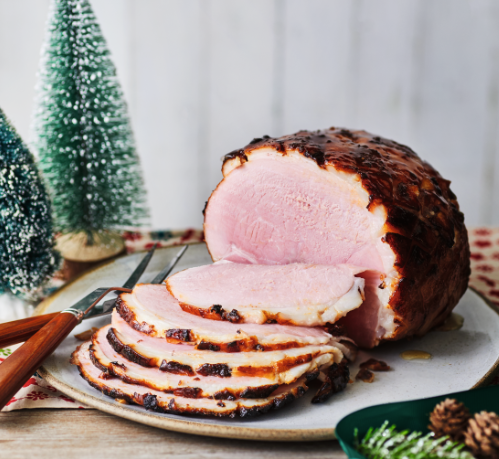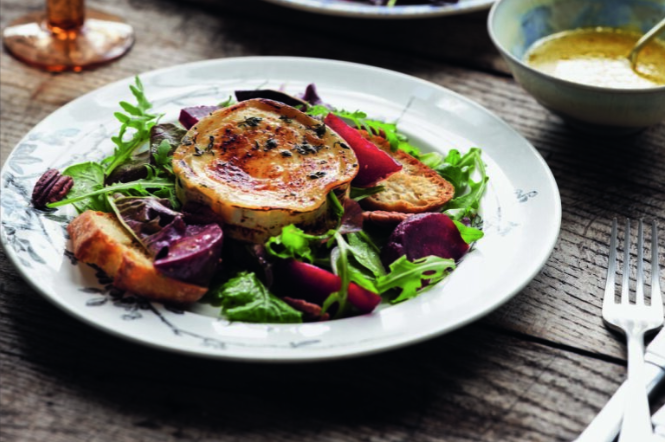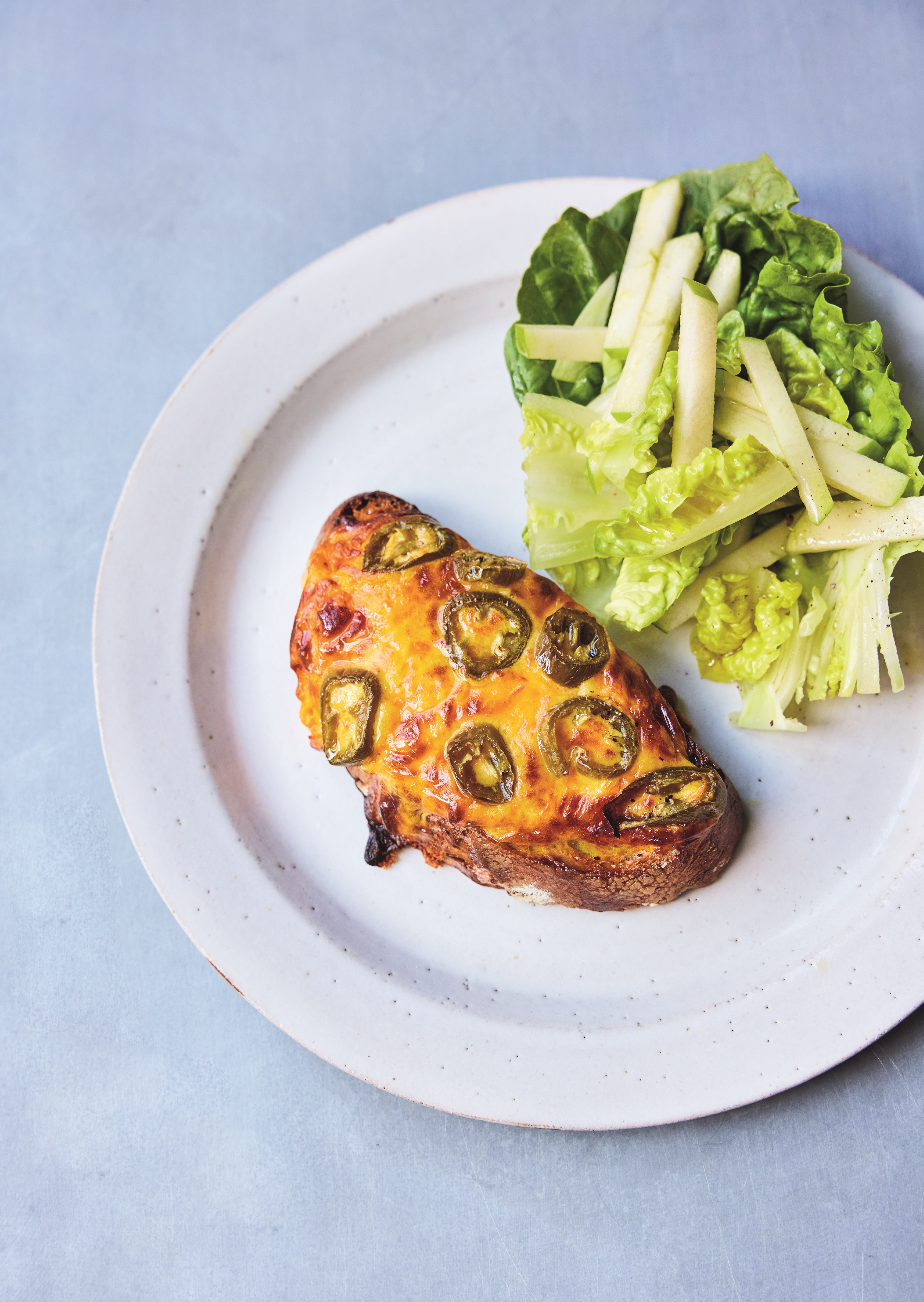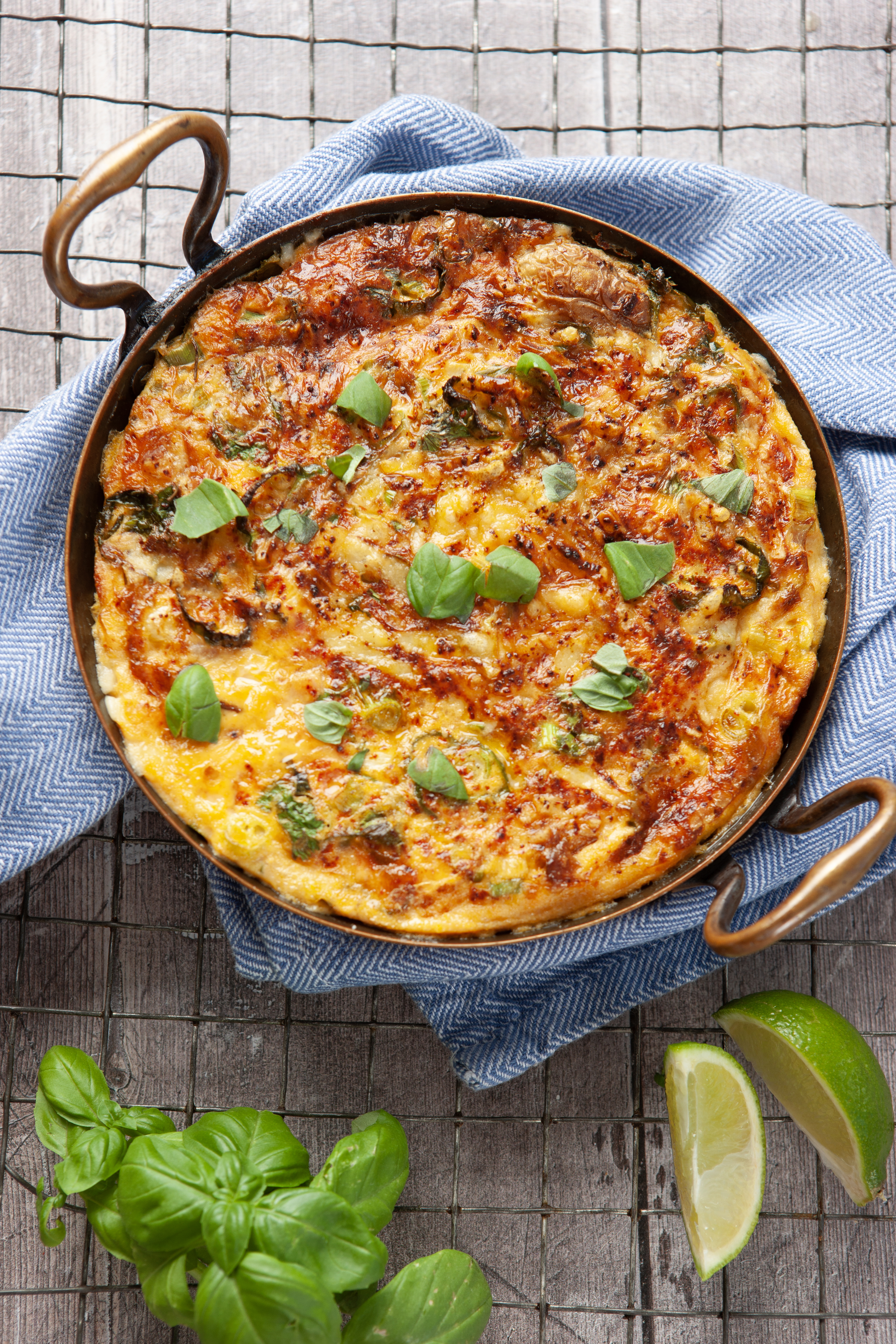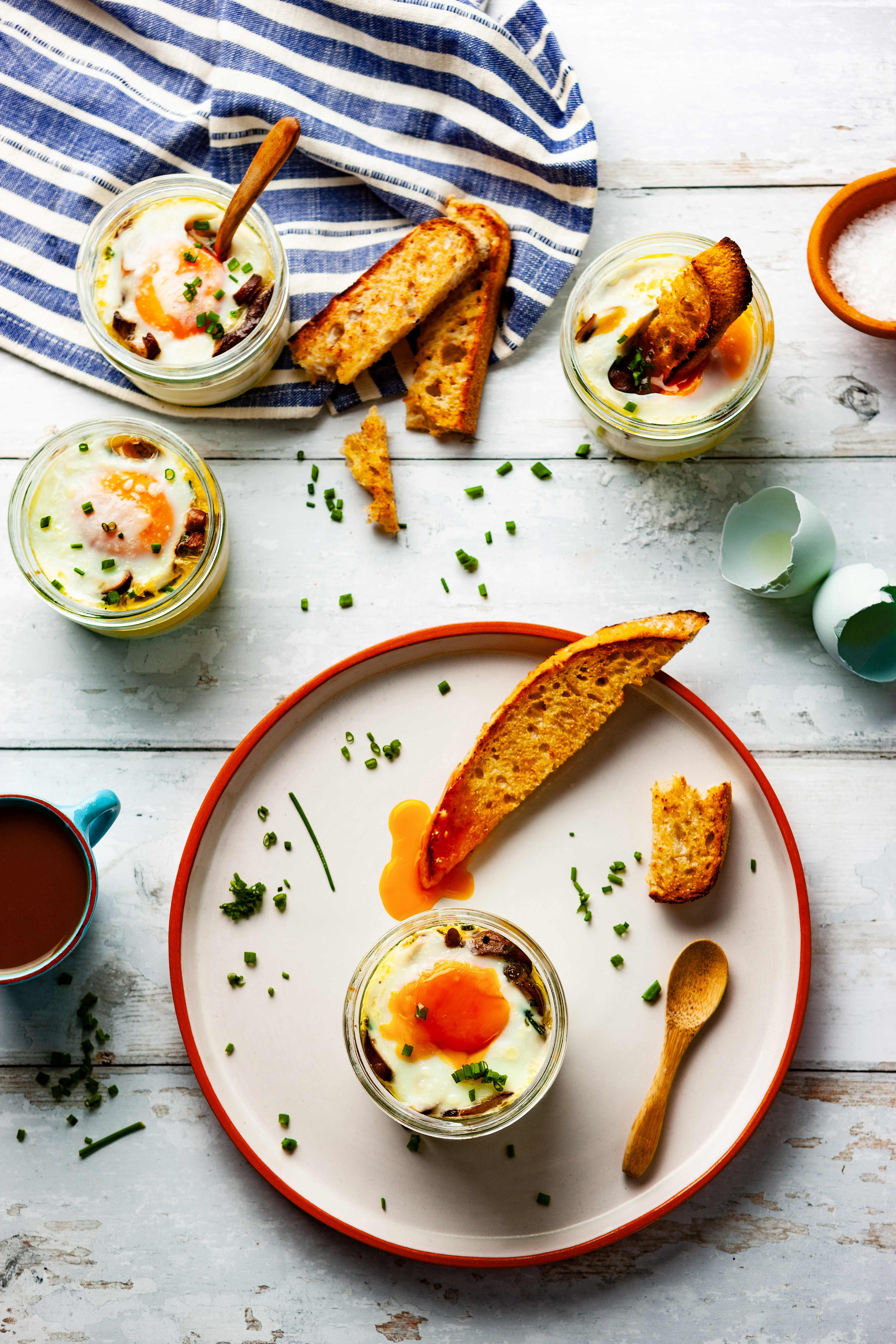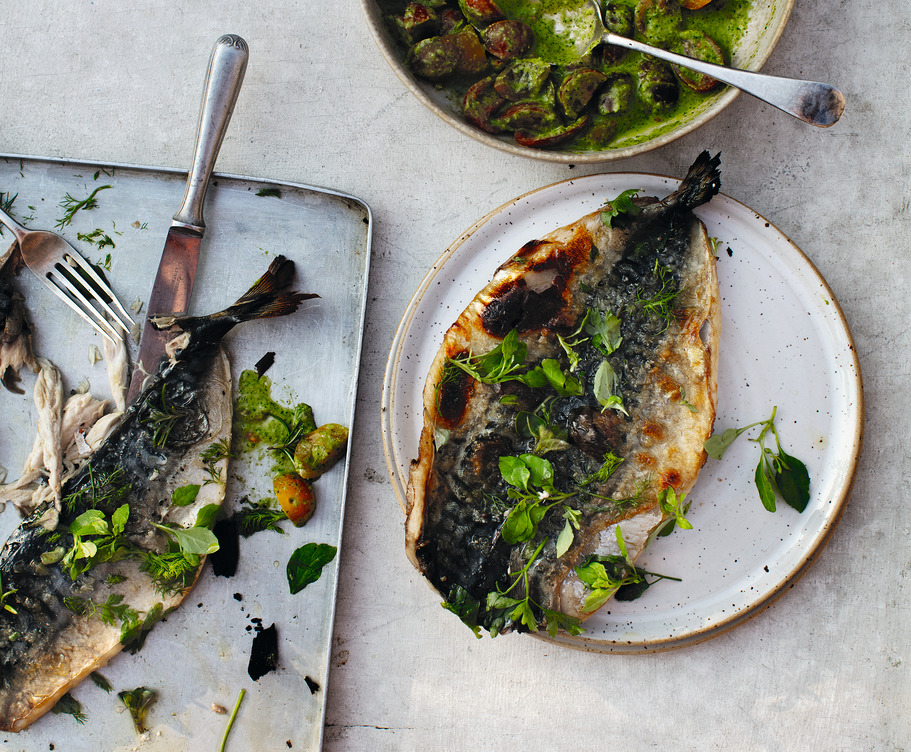Edd Kimber’s Homemade Crumpets
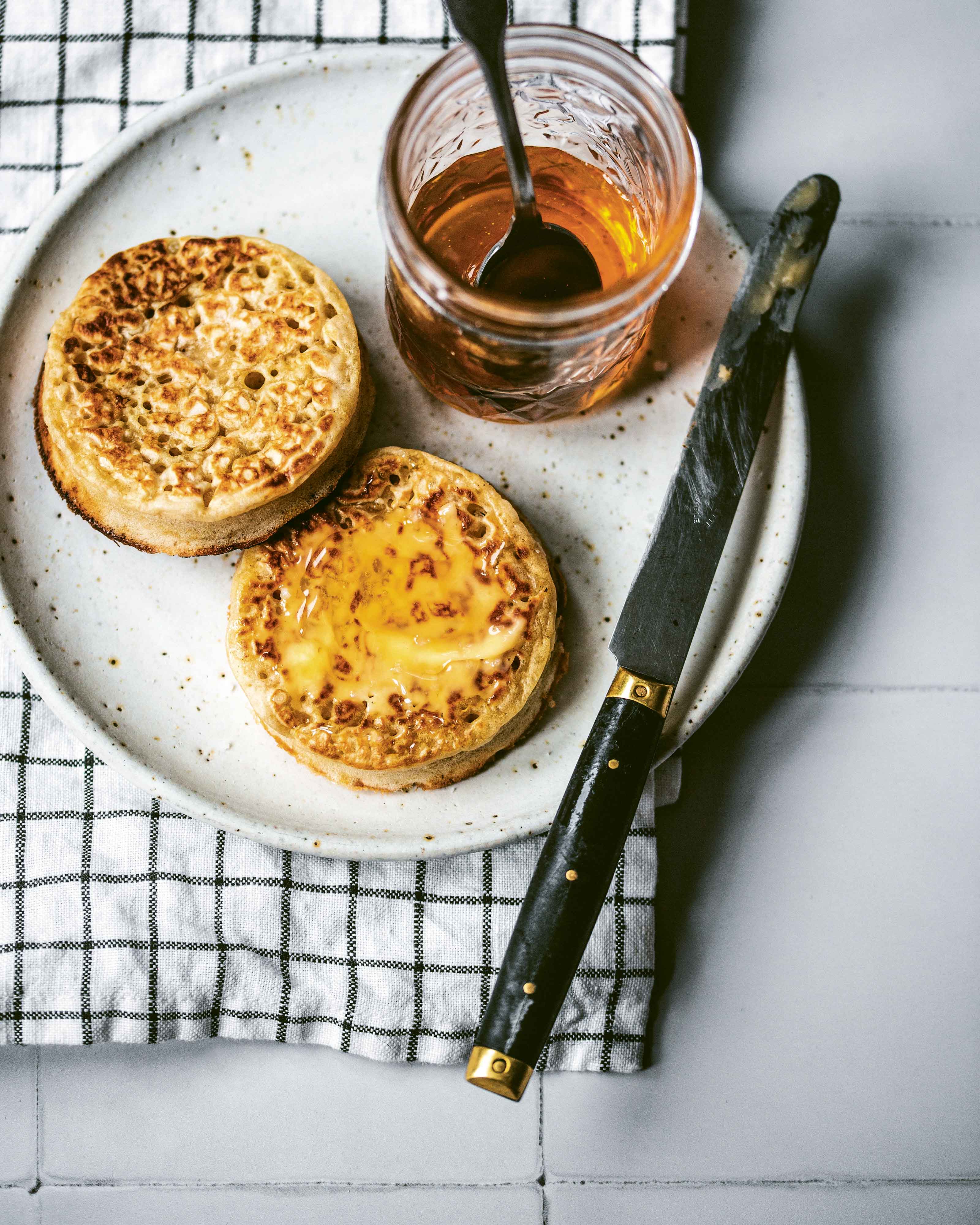
The joy of a crumpet lies in the little holes that cover the surface which, when toasted, hold the melted butter that is slathered over.
10 minutes, plus proving time prep, 10 minutes cook
Serves 4
Ingredients
100g strong white bread flour
65ml warm water
70ml whole milk
½ tsp fast-action dried yeast
½ tsp caster sugar
¼ tsp fine sea salt
¾ tsp baking powder
1 tsp cold water
Vegetable oil, for greasing
Method
Place all but the last 3 ingredients in a large jug and whisk into a smooth batter. Set aside for 1 hour, or until the batter has increased in volume and is incredibly bubbly, looking a bit like a science experiment.
When ready, place the baking powder in a small bowl, stir in the cold water, then mix briefly into the batter.
Lightly grease a large frying pan, preferably cast iron, and lightly grease 4 x 10cm rings. You can use tart rings, crumpet rings or any form of dessert ring, but you can also do without the rings, cooking the batter like pancakes. In this form, they are known as ‘pikelets’.
Place the greased rings in the pan over a low–medium heat. Divide the batter evenly between them and allow to cook until the bubbles that appear on the surface hold their shape and the batter starts to dry out and lose its shine. When almost set and the base of each crumpet is browned, flip them over and cook for another minute or so, until browned. Serve while still warm, or let them cool completely and serve later, toasted until crisp. These are best eaten on the day they are made, spread with salted butter and honey or jam.
More recipes to try
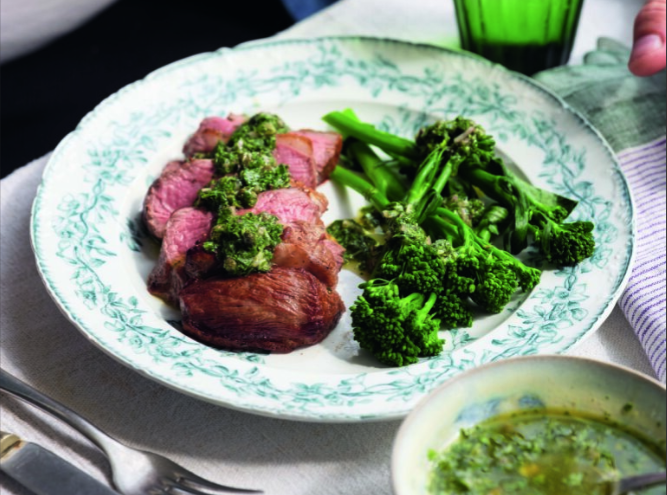
20 minutes
Serves 4
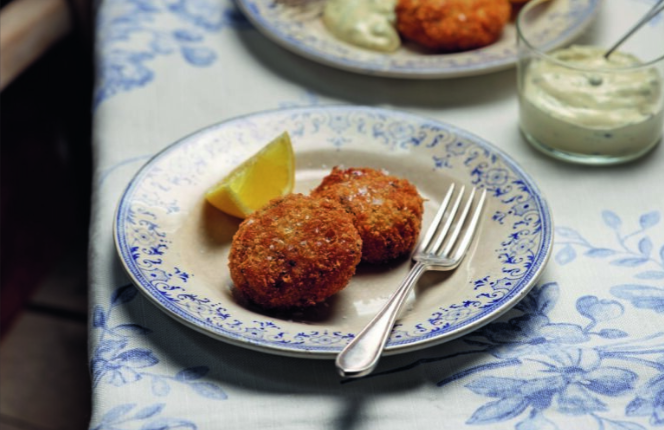
20 minutes plus 20 minutes chilling time
Serves 12
Great British Food Awards
Tasting videos

3 of the best biscuit and tea pairings
Treat yourself by discovering three decadent ways to match award-winning biscuits with tea
